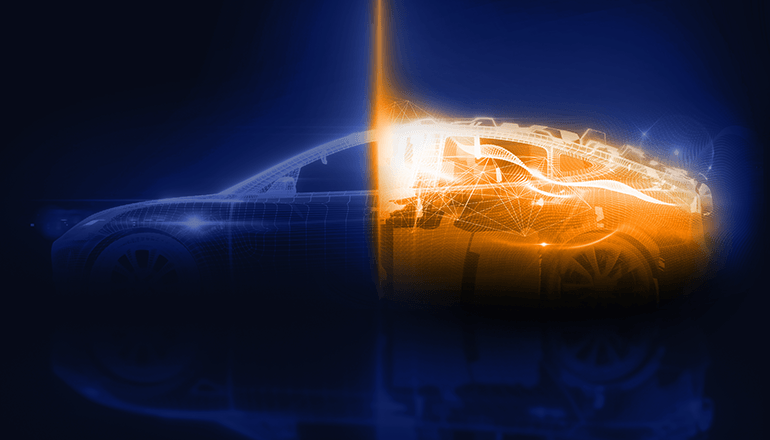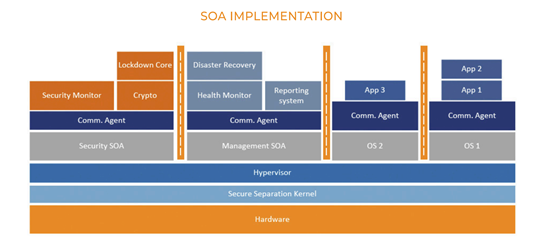HW and SW Modularity is About to Restructure the Automotive Supply Chain
October 15, 2020
Idan Nadav
Co-founder

Today’s drivers are not what they used to be. Craving constant connection, immediate gratification and complete customization, drivers are less focused on how the car will drive from point A to B and more on what the car can do for them during that journey.
In response to this, the very definition of a car is being revolutionized in response to consumer habits and desires. Much more focus is being given to software components in what is fast becoming a mega computer on wheels.
But, how can the car evolve to answer these needs within the existing E/E Architecture?
Zonal E/E Architecture
We know, the current E/E Architecture comprising up to 150 ECUs with miles of wiring in between is not scalable. The current architecture cannot provide the software capabilities needed to enable the user experience expected by today’s drivers.
E/E Zonal Architecture supports the evolution of the automotive industry to catch up with hardware and software trends and architectures that have long been used in the computer industry with massive adoption. Zonal E/E Architecture is built around the following 4 principles:
- HW Consolidation - Creating multi-purpose ECUs that will provide improved functionality than many separate ECUs used today for each function
- Wiring Optimization - Together with consolidated ECUs, new topologies for vehicle network communications will reduce the cabling length, weight, and cost to just a fraction of the current needs
- Ethernet Backbone - Bandwidth and capacity will be greatly improved when moving to an Ethernet system and cars will also provide improved performance, functionality, security and maintainability which are all “built in” when adopting Ethernet
- Software-Driven SOA - An evolved modular software architecture can accommodate the needed flexibility, security and agility for the new software-defined cars
Automotive SOA is Iphonizing the Car
Very soon, car dashboards will function like smartphones or smart TVs, with fully functioning app stores to download your favorite apps from OEMs and aftermarket providers that will fully customize and personalize the driving experience. These apps will provide a consistent, seamless experience not just for music, email and calendars, but also for adjusting steering, brakes, engine performance, tire pressure and more.
This will be accomplished by implementing Automotive SOA (Service-Oriented Architecture) in which applications are broken down into specific functional components or “services.” Any ECU, Domain Controller or Gateway will become a platform on which Tier 1 vendors and OEMs can develop their services using standardized protocols facilitating communications and enabling easy data transfer, irrespective of the underlying hardware, topology and protocols.
This enables OEMs and Tier 1s to maximize the functionality, security and safety of connected and autonomous vehicles while lowering the complexity of developing software and services to customize their software-defined vehicles.
An additional advantage of SOA for automotive is that it allows for built-in security (such as seamless encryption) & application containment so that applications can be monitored and not be able to destabilize the entire system.
Modularity is Here to Stay
Zonal E/E and Automotive SOA will result in hardware and software modularity for automotive manufacturers. This means they will be able to install Plug & Play ECUs with ease, provide a software functionality catalogue (OEM factory “app store”), replace existing setups with Interchangeable parts and of course, increased supply chain resilience.
Paired with a faster Ethernet backbone, this allows connecting/disconnecting devices in real time to an existing ECU without needing to start/restart the system, capability for secure over-the-air updates and a huge decrease in onsite maintenance and vehicle downtime.
The flexibility and scalability of hardware and software modularity is an outstanding opportunity for new revenue streams to turn drivers into subscribers of paid services. Downloadable applications are already providing new functionalities for Porsche, Mercedes and more, and this is just the beginning.
The New Technology OEMs
Over the past decade, we have seen the launch of new-age technology startups such as Tesla and Nio who are challenging established OEMs with new automotive designs and software-oriented vehicles.
These companies are founded with a software focus and do not have the years of traditional OEM designs in their DNA. Their software requires a fraction of the cost, while their security mechanisms are secure by design from their foundation.
These companies outsource the hardware part of building a car and are leading a huge shift in the supply chain. By incorporating Zonal Gateways, Domain Controllers, multipurpose ECUs, they demonstrate a consolidation in the parts needed to build a vehicle and as a result, a simplification and expected significant cost reduction.
The Automotive Supply Chain Earthquake
The automotive paradigm shift means that cars need to be built differently. As we explained above, this will actually create a reduction in the number of parts needed to build a car. However, these parts must be built by companies that have capabilities to provide advanced Zonal Gateways and ECUs to accommodate the needed modularity in a car.
The new Cybertech Tier provides F.A.S.T.E.R. components, leading to service-oriented cars that can provide the needed modularity, security and communication speed to answer all of today’s drives needs.
The supply chain is changing and GuardKnox is leading the way with secure, high-performance computing platforms for the software-defined and service-oriented vehicle.







